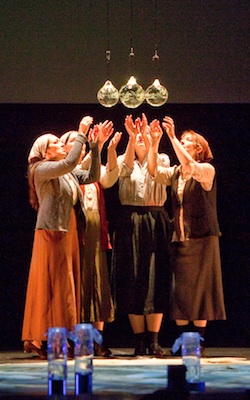By Alice Kaderlan , JTNews Correspondent
In the mid ‘60s, in the small German village of Efringen-Kirchen on the French border, a preteen boy and his friends came upon an old, overgrown cemetery. The headstones, many of which were falling over, had strange writing on them; the boys had never seen anything like it.
One of them was especially intrigued. He went home and asked his parents about the cemetery. They told him it was where Jews from their community were buried. The boy had never heard of Jews or Judaism but yearned to learn more about these mysterious people and the reason for their disappearance.
Fortunately, his parents and grandparents were willing to talk. They didn’t know a lot about Jews — mostly that they went to a synagogue rather than a church and didn’t celebrate Christmas — but shared with the boy what they did know. And they told him about the Holocaust, the first time he had ever heard of it. The boy’s parents knew that the Jews of the town had been sent to the Gurs internment camp in France in 1940; they didn’t know for sure what had happened after that, but it wasn’t hard to guess.
The boy’s curiosity led him to research what had occurred. His primary school history books were no help; pages relating to anything after 1933 had been torn out and there was no classroom discussion of the war or the Holocaust. So he relied on his parents and grandparents, who had opposed the Nazis. They told him what little they knew of Gurs and who in their town had been part of the local Nazi organization.
Over the years, the boy heard more about Gurs and the Holocaust, especially after the film “Shoah” was shown in Germany. He discovered that Hannah Arendt and her family had been sent to Gurs when the French rounded up non-French Jews who had sought refuge in their country, and that the famous German painter Felix Nussbaum had also spent time there. Then, in the late 1980s, the boy — now a man — met a reclusive American composer named Conlon Nancarrow who had also been at Gurs. Nancarrow had fought in the Spanish Civil War and been sent to Gurs by the French in 1939, shortly before the Jews arrived there.
By the time he met Nancarrow, the boy had grown into an accomplished kinetic sculptor, composer and designer of strange and beautiful musical instruments he dubbed “sound sculptures.” He had dropped his first name and moved to Seattle, where he became known simply as Trimpin. And he remained haunted by Gurs and what had happened to the Jews who were sent there.
At some point — he can’t identify precisely when — Trimpin decided to create a performance piece about Gurs and the Jews of Efringen-Kirchen. The project, titled “The Gurs Zyklus” (“The Gurs Cycle” in English), was given a major boost when Victor Rosenberg, the nephew of a Gurs internee, read about Trimpin’s project in The New Yorker. Rosenberg contacted Trimpin and offered a cache of his uncle’s letters written from Gurs. Another unexpected gift came while Trimpin was developing The Gurs Zyklus during a residency at Stanford University. Menlo Park resident Manfred Wildman, who had been interned in Gurs as a 10-year-old boy, read about the project in a local paper and provided more information about the camp.
Trimpin and his collaborator, writer and narrator Rinde Eckert, have incorporated content from both Rosenberg and Wildman into the script and imagery for The Gurs Zyklus, plus Trimpin’s original research. This includes a train ride Trimpin took from his hometown to Gurs, following the exact path that the Jews followed. Although the camp buildings have been destroyed, The Gurs Zyklus incorporates Trimpin’s photos of the cities and countryside that the train passes through as well as images of the 70-year old trees at the site, which he regards as “witnesses” to what happened.
Like much of Trimpin’s work, it’s hard to describe precisely what The Gurs Zyklus is. There is a narrator (Eckert) plus four female vocalists and, of course, an array Trimpin’s original kinetic sculptures. These include his signature fire organ in which a computer keyboard controls Bunsen burners to make a sound similar to that of a pipe organ. There are also rolling teeter-totters equipped with speakers that blast train sounds from Trimpin’s trip to Gurs, a computerized music program that interprets photos of the bark patterns taken from the trees at Gurs as sound, and four player pianos.
Although The Gurs Zyklus is, in its current form, a live theatrical performance, Trimpin has conceptualized it so it can be performed in a range of settings and as an interactive exhibition in a museum or art gallery. Wherever it’s offered he says the goal is to enable others to understand what happened in Gurs.
“This is not like reading a history book,” he explains. “It should be similar to how I experienced Gurs when I asked about it and wanted to learn more, to understand this chapter in our history and determine that it will never be forgotten.”
A video of MacArthur “genius” award-winner Trimpin talking about The Gurs Zyklus at Stanford University is available on YouTube at youtu.be/cYyVMVHsSL4.
